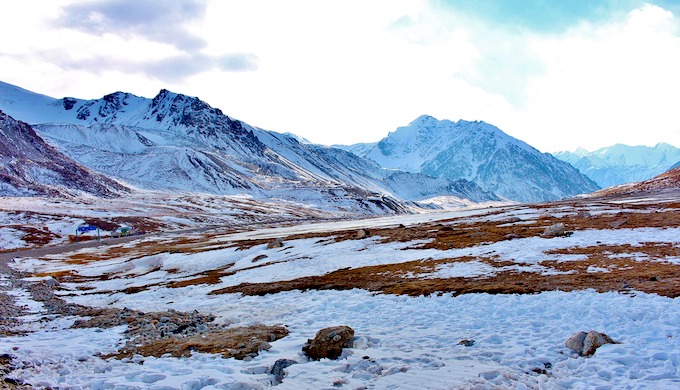
By Aminul Islam Mirja
NEW DELHI. April 7, 2022 (BSS) - Glaciers in the Himalayan region are melting and retreating at "varying rate" annually resulting significant impact on water resources of Himalayan rivers, Ganges-Indus and Brahmaputra, according to studies carried out by several Indian institutions and universities recently.
The mean retreat rate of Hindu Kush Himalayan glaciers is 14.9 ± 15.1 metre annually (m/a), which varies from 12.7 ± 13.2 m/a in Indus, 15.5 ± 14.4 m/a in Ganga and 20.2 ± 19.7 m/a in Brahmaputra river basins, the studies said.
However, glaciers in the Karakoram region have shown comparatively minor length change (-1.37 ± 22.8 m/a), indicating the stable conditions.
The studies also revealed that majority of Himalayan glaciers are melting or retreating at varying rates than glaciers in other parts of the world and reported accelerated heterogeneous mass loss.
"Loss of glaciers increase risk related to glacier hazards due to enhanced number and volume of glacier lakes, accelerated flash flood and Glacial Lake Outburst Floods (GLOFs), impact on agro practices in high Himalayan region".
Several Indian institutes, universities, organizations like Geological Survey of India (GSI), Wadia Institute of Himalayan Geology (WIHG), National Centre for Polar and Ocean Research (NCPOR), National Institute of Hydrology (NIH), Space Application Centre (SAC) and Indian Institute of Science (IISc) have been monitoring Himalayan glaciers for various scientific studies.
Besides, the Indian Ministry of Earth Sciences (MoES) through its National Centre for Polar and Ocean Research (NCPOR) has been monitoring six glaciers in the Chandra basin in western Himalaya since 2013, according to a written statement given by Indian State Minister for Earth Sciences Dr. Jitendra Singh in Lok Sabha on Wednesday.
The studies said that melting glaciers have significant impact on water resources of Himalayan rivers due to change in glacier basin hydrology, downstream water budget, impact on hydropower plants due to variation in discharge, flash flood and sedimentation.
Divecha Centre for Climate Change, IISc Bangalore under the aegis of DST has investigated Satluj River basin and reported that there will be an increase in glacier melt contribution until the middle of the century and then there will be a decline.
Numerous small glaciers located in the low altitude region of the Satluj basin indicate significant loss in the area till the middle of the century, creating a scarcity of water during the dry summer season, the studies said.
The studies revealed that melting of glaciers is a natural process and cannot be controlled although melting of glaciers does increase the risks related to glacier hazards.
However, another study revealed that glaciers in the Himalayas are melting at an "exceptional" rate because of global warming, threatening the water supply of millions of people in Asia.
The study carried out by the University of Leeds also revealed that Himalayan glaciers are shrinking far more rapidly than glaciers in other parts of the world, lead author of the study Jonathan Carrivick of the University of Leeds, said in December last year.
The glaciers are a critical source of water for about 250 million people in the mountains and an additional 1.65 billion who live in the river valleys below. These rivers include the Ganges, Indus and Brahmaputra.
The Himalayan mountain range is home to the world's third-largest amount of glacier ice, after Antarctica and the Arctic. The region is often referred to as the world's "Third Pole" for its huge store of ice and it is home to Mount Everest, K2 and other iconic peaks, according to reports.